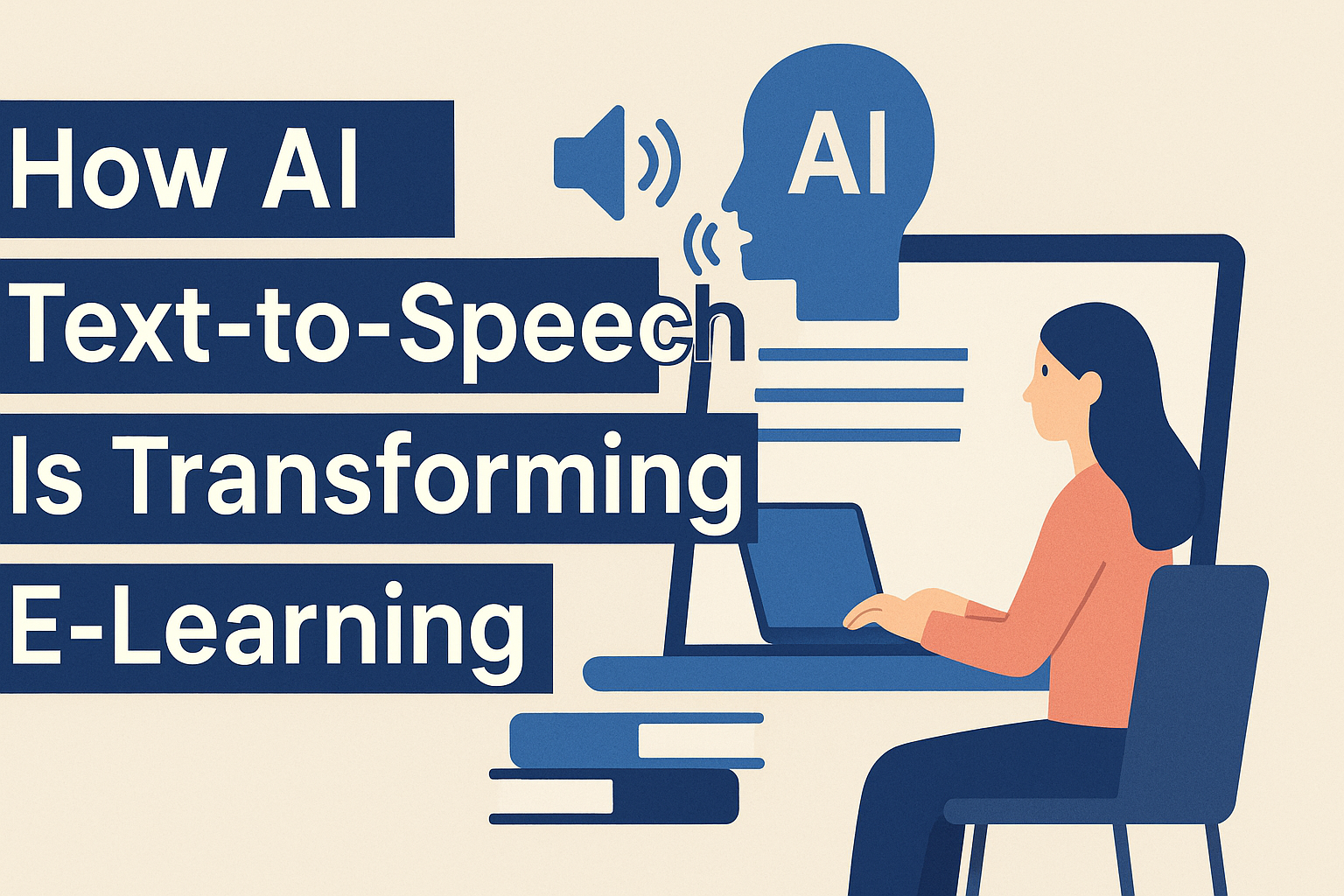AI Text-to-Speech (TTS) is transforming how learners experience digital education. As classrooms move online, AI technologies are reshaping how knowledge is shared and consumed. Among them, AI-powered TTS stands out by converting written text into lifelike speech, making lessons sound more natural and engaging.
This innovation not only enhances learning experiences but also ensures accessibility for students with different learning needs. By bringing human-like voices to e-learning platforms, AI TTS is turning digital education into an inclusive, interactive, and personalized journey for everyone.
Understanding AI Text-to-Speech Technology
AI Text-to-Speech (TTS) technology uses artificial intelligence to convert written text into natural-sounding speech. Unlike traditional TTS systems that rely on pre-recorded or rule-based voices, AI-powered TTS uses deep learning models to analyze patterns in human speech and generate lifelike tones, pauses, and emotions.
Machine learning and Natural Language Processing (NLP) help the system understand context, pronunciation, and linguistic nuances, creating realistic voices that sound human.
This technology is now widely used in education, where AI voices narrate e-learning lessons, language tutorials, and audiobooks, making content more interactive and accessible for learners across different languages and learning styles.
Core Benefits of AI Text-to-Speech in E-Learning
AI Text-to-Speech (TTS) technology is transforming e-learning by making education more inclusive, engaging, and flexible. It enhances accessibility for students with visual or reading challenges by converting written lessons into clear, spoken audio.
This allows every learner to access study materials with ease. TTS also supports multilingual and diverse classrooms by providing natural voice output in multiple languages, ensuring that global learners can understand lessons in their preferred tongue.
Furthermore, the use of realistic, human-like voices keeps students engaged and focused during digital lessons. By enabling audio-based content, AI TTS makes learning possible anytime, anywhere, empowering students to study while traveling or multitasking.
How Educators Can Integrate AI TTS in Digital Learning
AI Text-to-Speech (TTS) empowers educators to make digital learning more engaging and accessible. Teachers can use AI voices to narrate video lessons, explain tutorials, or add realistic voiceovers to online courses. This helps students focus better and absorb information through natural-sounding speech.
Additionally, educators can convert lengthy text-based materials such as PDFs, notes, or articles into interactive audio modules that students can listen to anytime. Furthermore, integrating AI TTS with Learning Management Systems (LMS) allows seamless narration of quizzes and assessments.
By adjusting voice tone, speed, and emotion, educators can personalize lessons to match different learning styles and make online education more dynamic.
Speechactors: Powering the Next Generation of AI Voice Learning

Speechactors powers AI voice learning with neural text-to-speech that sounds natural and consistent across lessons. For educators, it delivers high voice realism, clear diction, and stable pacing, plus wide language and accent options for global classrooms.
Emotional tone controls enable calm, excited, or empathetic delivery, with adjustable speed, pitch, and pauses via SSML. It supports long-form narrations, dialogue for role plays, and short microlearning clips, and exports clean audio in MP3 or WAV for LMS upload.
Educators use it to localize courses, add accessible audio tracks, craft character voices for scenarios, and maintain a single brand voice across videos, podcasts, and interactive modules.
Challenges and Future Opportunities
The future of AI-driven learning brings both innovation and refinement. One main challenge is maintaining voice authenticity and accurate pronunciation, especially across diverse languages and accents.
Developers are focusing on improving linguistic precision to ensure a more natural listening experience. Another key focus is the ethical and responsible use of AI voices, ensuring transparency, obtaining consent, and preventing misuse in educational contexts.
Furthermore, upcoming innovations such as voice cloning, adaptive narration, and emotional AI will personalize e-learning experiences by matching tone, emotion, and learner engagement. Together, these advancements are shaping a smarter and more human-like voice technology ecosystem for education.
Frequently Asked Questions (FAQs)
What makes AI TTS better than standard TTS?
AI TTS uses deep learning to mimic real human speech, delivering natural tone, emotion, and rhythm. It adapts contextually to words, making learning 40% more engaging than robotic standard TTS systems.
How does Speechactors improve student engagement?
Speechactors enhances engagement by using lifelike AI voices that keep students attentive. Its expressive tone and clear narration increase comprehension and retention rates by nearly 35% in e-learning environments.
Can AI TTS be used for multilingual courses?
Yes, AI TTS supports over 100 global languages and accents, enabling seamless translation and narration for diverse learners. It ensures consistent pronunciation and better cultural inclusivity in multilingual education.
Is AI TTS suitable for K–12 and higher education platforms?
AI TTS is ideal for both K–12 and higher education platforms, simplifying content delivery through age-appropriate, natural-sounding voices. It helps students understand lessons better, especially in visual and audio-based learning models.
Conclusion
AI Text-to-Speech (TTS) is reshaping e-learning by making education more accessible, engaging, and scalable across the globe. It bridges linguistic and accessibility gaps, allowing learners from diverse backgrounds to grasp lessons through natural, human-like voices.
With AI-driven narration, educators can deliver consistent and interactive lessons without recording limitations. Platforms like Speechactors empower creators to craft inclusive learning experiences that speak to every learner literally and emotionally.
As the digital classroom continues to evolve, embracing AI TTS ensures education reaches every ear, everywhere.
